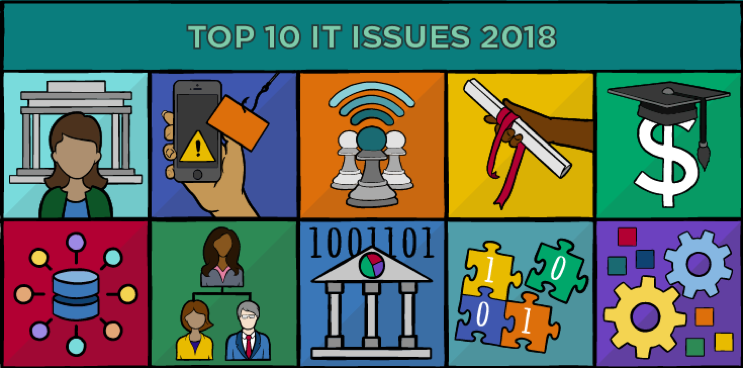Building Real Fidelity Into WiFi – Site Planning Guide (Part 2 of 2)
As you may have read in my first article, I addressed some of the challenges faced by university CIOs in planning for internet access via WiFi. In this article, I offer some ideas on building a strong WiFi network, starting with building a WiFi site plan. In building a Site Plan, Range and Coverage Pattern (overall potential service area and distance), Data Rate Boundaries (areas where link speed changes) and Roaming Boundaries (where service stops) are all important to analyzing performance.
WiFi Site Planning
WiFi site planning is really an ongoing exercise as radio frequency (RF) propagation and subsequent obstacle-interference bandwidth degradation is worthy of a whole chapter on what can go wrong with wireless networks causing minor to major internet outages. Since WiFi is an unlicensed FCC frequency, there are a large and increasing number of devices, from cordless telephones, baby monitors, door security devices, audio/video control systems, cellphone hotspots and others that share the same frequencies.
In addition, some microwave ovens (operates at 2.45 and 5 giga Hertz) as well as devices with electric motors, such as refrigerators, soda machines, water fountains, HVAC-Heating Ventilating, Air-Conditioning systems that generate RF noise, which can interfere with data transmission. There are many new versions of the WiFI protocol 802.11, which as 802.11n, which increases speed to 600 megabits per second, 802.11ac to 1 gigabit and 802.11ax up to 10 gigabits per second. WiFI will also be integrated into cellular 5G technologies to expand coverage and performance.
Here are some ideas for your own Site Survey Kit that I have compiled from real-life experiences, friends and others and a number of sources but certainly not all-inclusive:
- AP-Access Point Review with both POE-power over Ethernet and stand-alone power source – your own lab test results not just the manufacturer spec sheet – POE is not a panacea and depending on the distance voltages can degrade
- Antennas – directional and omnidirectional testing with access point in your own lab
- RF Spectrum analyzer
- PC-Personal Computers with two WiFi cards and protocol/network analysis software
- Pre-loaded building and visually-verified floor plans with conduit and power locations
- Walkie-talkie – tested in all conditions including above 120 degrees in hazardous conditions aks steam tunnels
- Digital camera not just your smartphone
- Measuring tools – tape or wheel
- Ladder – 2-3 step or large for climbing up and down into basements but ropes and other preparations are good
- Tool kit with lot of blueprints, paper, pencils, tape, clipboard, hammer, screw drivers, voltmeter, spare connectors, etc.
- Lockable and secure rolling carrying case/cart for all equipment
- Variable attenuator – to simulate signal degradation
- Master keys – none of the lists we saw had them; chances are you will need access to all kinds of wiring/fire closets, rooms, offices.Master Keys are recommended if you can get them or campus police on call when you need them.
- If you have other tips and tools for doing a better site plan, please email me at [email protected] and I will update this article.
- In future articles, we will explore other issues in the Site Survey such as:
- Range and coverage patterns – include stairwells if voice over WiFi is used
- Data rate boundaries
- Roaming boundaries
- Link speed throughput performance
- Obstacle interference sources including outside sources
- Conduit and power requirements
- Pending architectural changes/remodel including any building code issues
Summary – I would like to thank 7SIGNAL for the opportunity to share my thoughts and real-life experiences on designing and building better WiFi performance. You can find more of their indepth presentations and articles and a free wireless performance sensor here.
By Evan Kirstel @evankirstel





